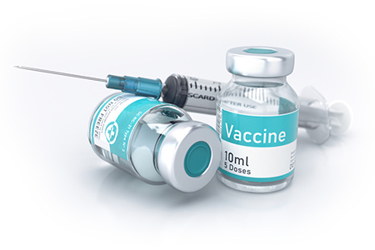A Brief Guide For Vaccine Companies Working Toward FDA Approval For the First Time
By Padmini Ayapilla, Freyr Solutions

Efficient vaccine development and approval are imperative, especially during global health crises. This article outlines best practices for expediting the U.S. FDA approval process while maintaining safety and efficacy standards. We’ll share 11 quick tips to keep in mind during your vaccine R&D, understanding the Emergency Use Authorization (EUA), post-approval surveillance and monitoring, and more.
11 Key Considerations During Vaccine R&D
- Collaborative Synergy: In the race to develop vaccines, fostering collaboration is paramount. Embrace open dialogue and teamwork with fellow scientists, researchers, and regulatory bodies. Seek their guidance early and often, promoting knowledge exchange that will benefit everyone.
- Robust Research Investment: Commit to substantial financial investments in your vaccine research and development. Adequate funding allows for an accelerated pace of work, efficient resource allocation, and the capacity to navigate potential setbacks with resilience.
- Streamlined Regulatory Pathways: One of the most effective ways to expedite approval is to take full advantage of the FDA's regulatory pathways. Leverage mechanisms such as Priority Review and Fast Track to facilitate a swifter evaluation of your vaccine candidate. We’ll take a closer look at the EUA in the next section of the article. Understand the pathways thoroughly and prepare your application accordingly.
- Data Sharing Transparency: Transparent and timely sharing of research and clinical trial data with the FDA allows for real-time evaluation and speeds up the decision-making processes. Also, detailed information about clinical trial protocols, results, adverse events, and manufacturing practices is made available to the public. This transparency fosters trust and confidence in the regulatory process and enables healthcare professionals and individuals to make informed decisions about vaccination.
- Parallel Progress: In the conventional vaccine development model, stages occur sequentially. In the age of urgency, it is time to reconsider this. Work in parallel when possible – advance preclinical testing, manufacturing scale-up, and clinical trials concurrently to save precious time.
- Adaptation and Innovation: Adaptive trial designs allow you to tweak protocols and sample sizes in response to incoming data. This method optimizes the efficiency of clinical trials and offers a greater chance of gaining approval without lengthy delays.
- Surrogate Endpoints: For a more rapid pathway to approval, be open to surrogate endpoints or biomarkers that can predict clinical benefit. These endpoints demonstrate vaccine effectiveness earlier in the development phase, potentially expediting approvals.
- Public Engagement: Recognize the importance of public perception. Effective public engagement and education campaigns can build trust and reduce vaccine hesitancy, fostering a more favorable environment for regulatory approval.
- Manufacturing Capacity: Invest in manufacturing capacity before the approval to facilitate rapid scale-up once authorization is granted. An efficient production pipeline is critical for meeting the demand.
- International Collaboration: In a world interconnected by the shared risks of infectious diseases, international collaboration is vital. Partner with regulatory agencies worldwide to harmonize approval processes and facilitate global access to lifesaving vaccines.
Understanding EUA
In extraordinary circumstances, such as the recent COVID-19 pandemic, the FDA may grant EUA to expedite the availability of vaccines. An EUA allows for the use of medical products, including vaccines, before the traditional approval process. The FDA grants EUAs only when the available scientific evidence demonstrates that the potential benefits outweigh the potential risks.
Despite the expedited nature of EUAs, the FDA maintains strict standards for safety and efficacy. Vaccines authorized under an EUA still undergo rigorous evaluation, including a thorough analysis of clinical trial data, manufacturing quality, and ongoing safety monitoring. The agency works diligently to ensure that any vaccine granted an EUA meets the necessary standards to protect public health.
The FDA works closely with vaccine manufacturers, providing guidance and oversight throughout the clinical trial process. It ensures protocols are followed, data are accurately collected, and participant safety is the top priority.
Post-approval Surveillance And Monitoring
The agency plays an active role in monitoring the vaccine's safety and effectiveness after it receives FDA approval or an EUA. Robust post-approval surveillance systems are in place to detect and investigate potential adverse events. This includes collaboration with healthcare providers, vaccine manufacturers, and the public to report and analyze adverse events, and ongoing evaluation of real-world data.
The FDA's Vaccine Adverse Event Reporting System (VAERS) is a key component of post-approval surveillance. It allows healthcare providers, vaccine manufacturers, and the public to report any adverse events following vaccination. This system enables the FDA to detect and respond to any emerging safety concerns promptly.
Additionally, the FDA collaborates with other federal agencies, such as the Centers for Disease Control and Prevention (CDC) and the NIH, to enhance vaccine safety monitoring efforts. Continuous evaluation of post-approval data helps ensure the safety and efficacy of vaccines in real-world conditions.
Recommending The Vaccine For Use
The Advisory Committee on Immunization Practices (ACIP) develops recommendations for the use of a vaccine. It is a group of medical and public health experts that makes the recommendations for FDA-approved vaccines. The committee considers the following factors before recommending a specific vaccine:
- the safety and efficacy of the vaccine when administered at specific ages,
- the seriousness of the vaccine-preventable disease, and
- the health benefit of the vaccine in terms of disease spread.
Based on the ACIP recommendations, the CDC director decides whether to approve the recommendation. Once it gets the director’s approval, the recommendation becomes the official CDC public health guidance for the safe use of the vaccine in the country.
Informed Decision-making And Vaccine Education
The FDA recognizes the importance of informed decision-making regarding vaccines. To promote vaccine education, the agency works with healthcare professionals, public health organizations, and community leaders to provide accurate and accessible information about vaccines. This includes disseminating information about the benefits, risks, and potential side effects of vaccines, as well as addressing common concerns and misconceptions.
Conclusion
Collaborative synergy with regulatory bodies, robust research investments, and streamlined regulatory pathways are vital. Transparency in data sharing, adaptive trial designs, and the consideration of surrogate endpoints can accelerate approvals. Political commitment and public engagement help build trust, while advanced investments in manufacturing capacity are crucial for meeting demand. Furthermore, international collaboration fosters global access to lifesaving vaccines.
As we face the urgent challenges of our time, vaccine development is the solution. It is not just about innovative science; it is about efficiently harnessing that science. By working closely with the FDA, embracing best practices, and prioritizing safety and efficacy, we can pursue a faster and compliant path toward approval.
 About The Author:
About The Author:
Padmini Ayapilla is team lead, Medicinal Products Regulatory Division, at Freyr Solutions. She holds extensive experience in regulatory affairs, drug labeling, and publishing and submissions.
